When I was a kid, growing up culturally Jewish in the suburbs of New York City, we used to celebrate Christmas. Many of the Jewish families in our town did, and so too did some of our Jewish relatives in nearby communities. I’ll admit that it struck me as odd sometimes — we identified as Jewish. We didn’t try to hide our heritage in any way. But we celebrated the Christian holidays — Easter as well as Christmas. We also celebrated Passover. We didn’t do much with Hanukkah, though every couple of years one of us might pull out our old, tinny Menorah and light candles.
We had a wonderful old collection of glass ornaments for our trees — ornaments I still have to this day. (Well, I have most of them. Each year one of us would drop one or two — a slow, steady attrition, like ornaments being voted off the Island of Misfit Culturally Inappropriate Holiday Paraphernalia.) My mother always insisted on Scotch Pines for our trees, because she loved their scent. More than any other tree, she believed, Scotch Pines smelled like Christmas. Or like Christmas was supposed to smell in Jewish households.
I was the youngest of four children by many, many years. My oldest sibling, Bill, was nearly 15 years older than me; the other two, my sister Liz, and my brother, Jim, have me by 12 and 6 years respectively. And so by the time I was old enough to be aware of such things, my parents had passed off the task of buying our tree to my siblings and me. Sometimes all four of us went to pick one out, sometimes it was just us “boys.” After a while, certainly by the time I was in middle school, Jim and I were the only ones who cared enough to go.
And there were certain immutable traditions we had to follow. One, as I have already said, was that we get a Scotch Pine. The problem with this rule was that Scotch Pines are actually quite ugly as Christmas trees go. They are short, squat, dumpy even — the Dwarves of Christmas-Treedom. They are also are notorious for having bent trunks, making them hard to set up in a tree stand. Almost every year, Jim and I would reach the tree lot — there was one in particular we went to most years — and spend a bit of time staring wistfully at the Blue Spruces and Douglas Firs, noting their sleek, triangular perfection, their symmetry, their straight trunks. And then, remembering our mother’s preference, we would trudge over to the “Scotch Pine Forest” and pick out our lumpy tree.
The other two immutable traditions — which actually bring me to my purpose in writing this post — were that we get our tree on the day of Christmas Eve, and that we spend no more than the $20 Dad would peel off his billfold that very morning before he headed off to work.
Having the tree in the house meant disrupting the strict order of our furniture and furnishings. My parents loved their home and had designed it with care, so that it looked just so. The tree was like a relative who comes every year and parks himself on your couch in the middle of the living room. They knew he was coming, they knew he would be gone just after New Year’s. Best, then, to limit the damage and its duration. We bought the tree on December 24th, we decorated that night, usually after a dinner of Chinese food at a local restaurant, and we broke that sucker down on New Year’s Day, a week later.
And the $20 . . . That was just Dad’s price limit. He loved to tell the story of the time he spent $2.00 on a tree, back when he and my mother were first married. He bought a tree for $5.00 and then had the vendor cut off a branch or something that made it look lopsided. (No doubt this was a Scotch Pine, too.) And as the vendor cut the piece off, a guy happened by, spotted the scrap, and said to my father, “That’s just what I need. I’ll give you three bucks for it.”
He was in finance, and so understood inflation. He never expected us to replicate his feat. But $20 was his limit. The tree was only going to be in the house for a week, after all. Why should we spend more? This had the effect of further locking us into Scotch Pines, since the trees for which Jim and I pined (sorry, couldn’t resist . . .) were way more expensive. At the same time, I have to admit that the timing of our purchase helped with the $20 strategy. By mid-afternoon on the 24th of December, the guys selling trees were looking at taking a loss on their remaining stock. Every tree we bought at the last moment meant one fewer tree in the wood-chipper. We usually got pretty good deals.
Fast forward several decades, and I find myself, on this post-Thanksgiving weekend, wondering if I need to be buying our tree today. Our girls LOVE having a tree at the holiday, and the truth is Nancy and I love it, too. So we have to get one. In this part of Tennessee, though, as in so many parts of the country, trees went on sale LAST weekend, two thirds of the way through November. A week or two from now, they’ll be gone. Buying a tree on December 24? Impossible.
And buying a tree for $20?
Sorry. I’m done laughing now.
We don’t buy Scotch Pines. Usually it’s Frasier Firs. But they can cost upwards of $80. Or more. By my father’s calculus, in order to make that expense worthwhile, we’d have to keep the tree up until Valentine’s Day. Trees have gotten so expensive, and I feel so much pressure to buy one before the lots empty out, that this year Nancy and I have considered the unthinkable. That’s right. We have discussed getting an artificial tree.
There are real reasons for doing this, or at least thinking about it. Artificial trees, if reused for several years, are marginally better for the environment (although, since they’re made of plastic and shipped here from overseas, it’s a very close call). In terms of relative cost, they pay for themselves in a few years — again, this assumes we would reuse the tree year after year. They can be put up and taken down whenever we want. They don’t have to be watered. They are far less likely to catch fire. They don’t shed to the extent that real trees do.
But they don’t have that Christmas tree smell. Scotch Pine, Balsam, Firs, Spruces. They ALL smell great. The artificial ones, not so much. Which means we’ll probably break down and buy a real tree, likely sometime in the next few days.
Then again, those pine-scented air fresheners for cars are fairly cheap. And they look a little like Christmas ornaments . . .
Have a good week.









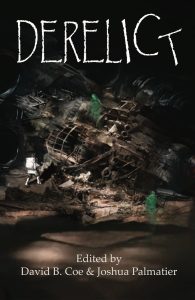 Last year, I co-edited Derelict. We received more than four hundred stories. The year before, I co-edited Galactic Stew. We received more than four hundred stories. The year before that, I co-edited Temporally Deactivated. We received more than two-hundred and fifty stories. Again, these are submissions for a total of six or seven slots.
Last year, I co-edited Derelict. We received more than four hundred stories. The year before, I co-edited Galactic Stew. We received more than four hundred stories. The year before that, I co-edited Temporally Deactivated. We received more than two-hundred and fifty stories. Again, these are submissions for a total of six or seven slots.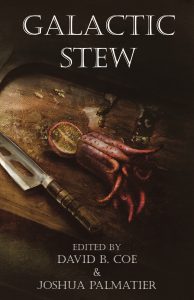 Along similar lines, ZNB anthologies are themed, which means that all the stories are about something in particular. Galactic Stew was about food. Derelict was about abandoned or lost ships. Noir is about detectives, in SF, fantasy, horror, or paranormal settings, investigating mysteries. As with the GLs, anthology themes are not suggestions. We’re not saying “If you feel like writing about detectives, feel free, but we’ll take any story about anything.” We’re saying, “For this anthology, we want detective stories with a speculative fiction element.” I can’t tell you how many stories we get that have nothing at all to do with our theme. I CAN tell you that we reject every last one of them. If you send to a themed anthology open-call a story that is off theme, it will not be accepted. Ever. Full stop.
Along similar lines, ZNB anthologies are themed, which means that all the stories are about something in particular. Galactic Stew was about food. Derelict was about abandoned or lost ships. Noir is about detectives, in SF, fantasy, horror, or paranormal settings, investigating mysteries. As with the GLs, anthology themes are not suggestions. We’re not saying “If you feel like writing about detectives, feel free, but we’ll take any story about anything.” We’re saying, “For this anthology, we want detective stories with a speculative fiction element.” I can’t tell you how many stories we get that have nothing at all to do with our theme. I CAN tell you that we reject every last one of them. If you send to a themed anthology open-call a story that is off theme, it will not be accepted. Ever. Full stop.

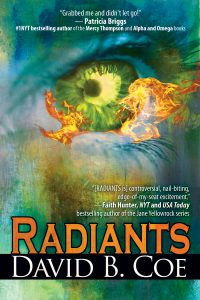 I was in the middle of writing a book — Invasives, the sequel to Radiants — and I dove back in. It’s a book about family, as so many of my novels are, and about discovering powers within. It doesn’t take much imagination to understand why I would find that particular story line comforting.
I was in the middle of writing a book — Invasives, the sequel to Radiants — and I dove back in. It’s a book about family, as so many of my novels are, and about discovering powers within. It doesn’t take much imagination to understand why I would find that particular story line comforting.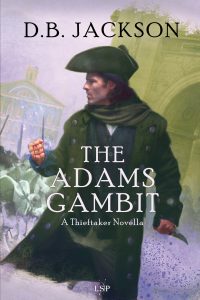 And so around that time, unsure of what to write next, I acted on an idea I’d had for several years. I hung out my virtual shingle as a freelance editor. Work came in quickly, and before I knew it I was editing a series for one friend, and talking to others about future editing projects. I also released the Thieftaker novellas. And prepared for the October release of Radiants. And started gearing up for the Kickstarter for Noir, the anthology I’m co-editing for
And so around that time, unsure of what to write next, I acted on an idea I’d had for several years. I hung out my virtual shingle as a freelance editor. Work came in quickly, and before I knew it I was editing a series for one friend, and talking to others about future editing projects. I also released the Thieftaker novellas. And prepared for the October release of Radiants. And started gearing up for the Kickstarter for Noir, the anthology I’m co-editing for 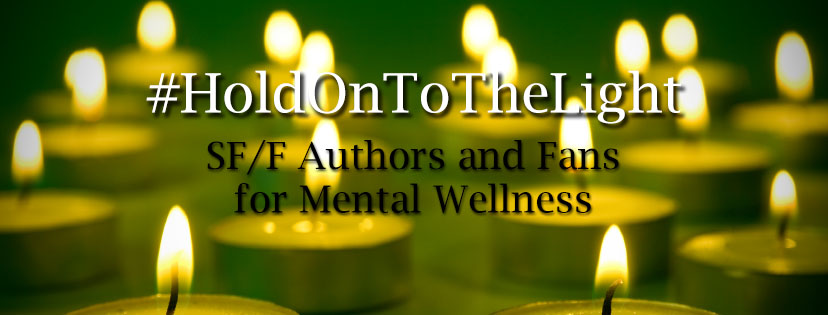 Shortly after I graduated from college, back in Medieval times, I corresponded with a dear college friend, one who continues to this day to be a close friend. At the time, she was dealing with some emotional issues and had started therapy. “Counseling is the best thing in the world,” she wrote to me. “If everyone was in counseling with a good counselor there would be world peace.”
Shortly after I graduated from college, back in Medieval times, I corresponded with a dear college friend, one who continues to this day to be a close friend. At the time, she was dealing with some emotional issues and had started therapy. “Counseling is the best thing in the world,” she wrote to me. “If everyone was in counseling with a good counselor there would be world peace.”